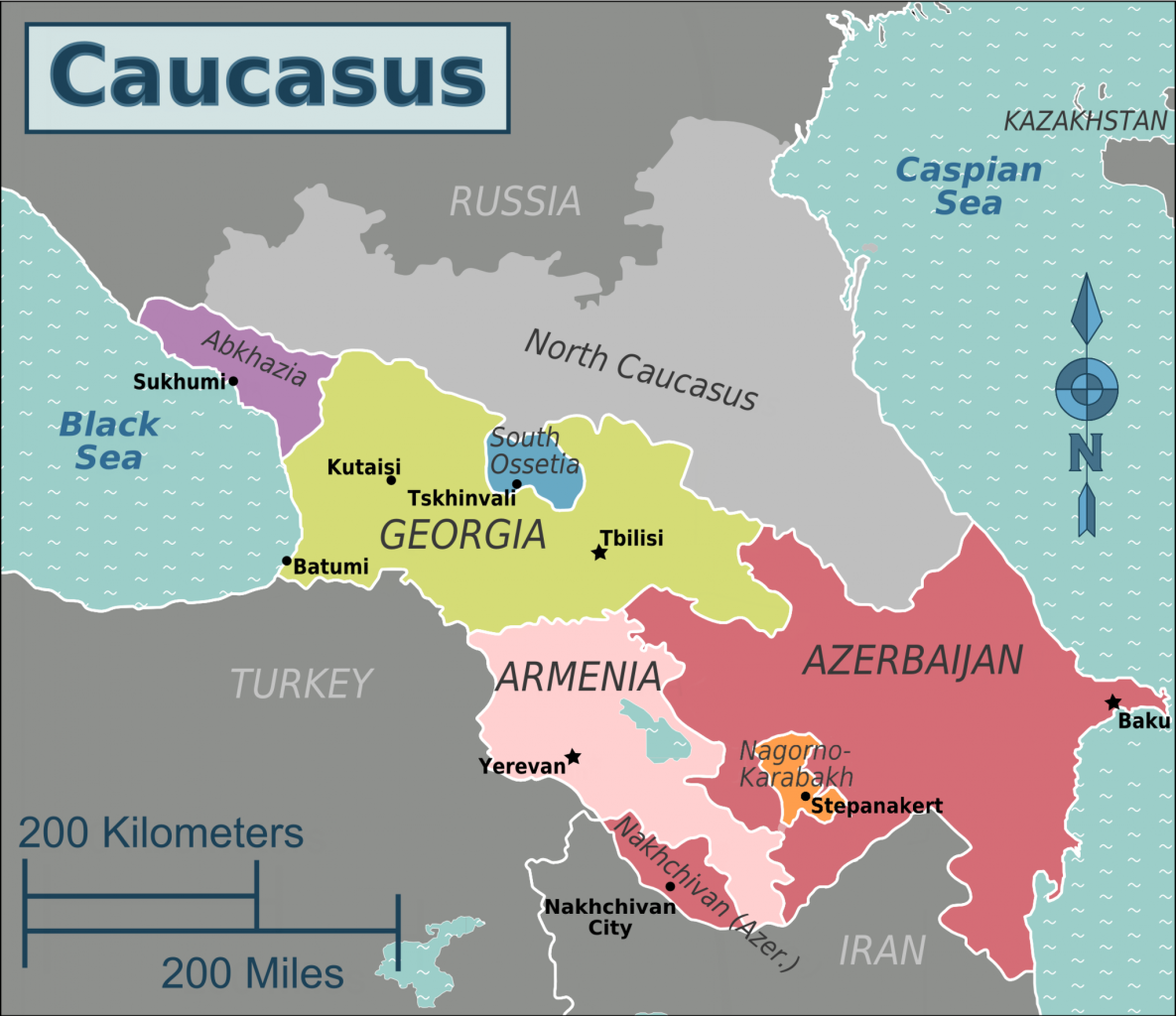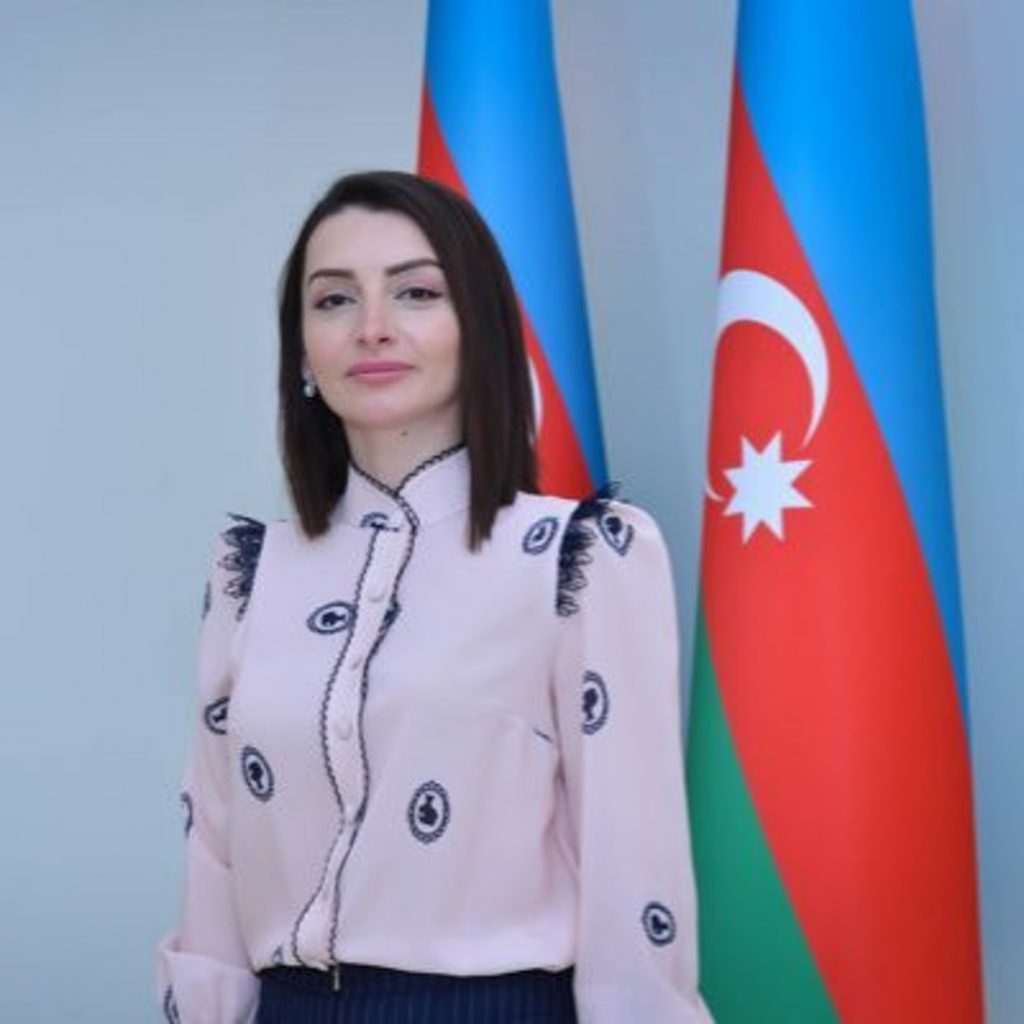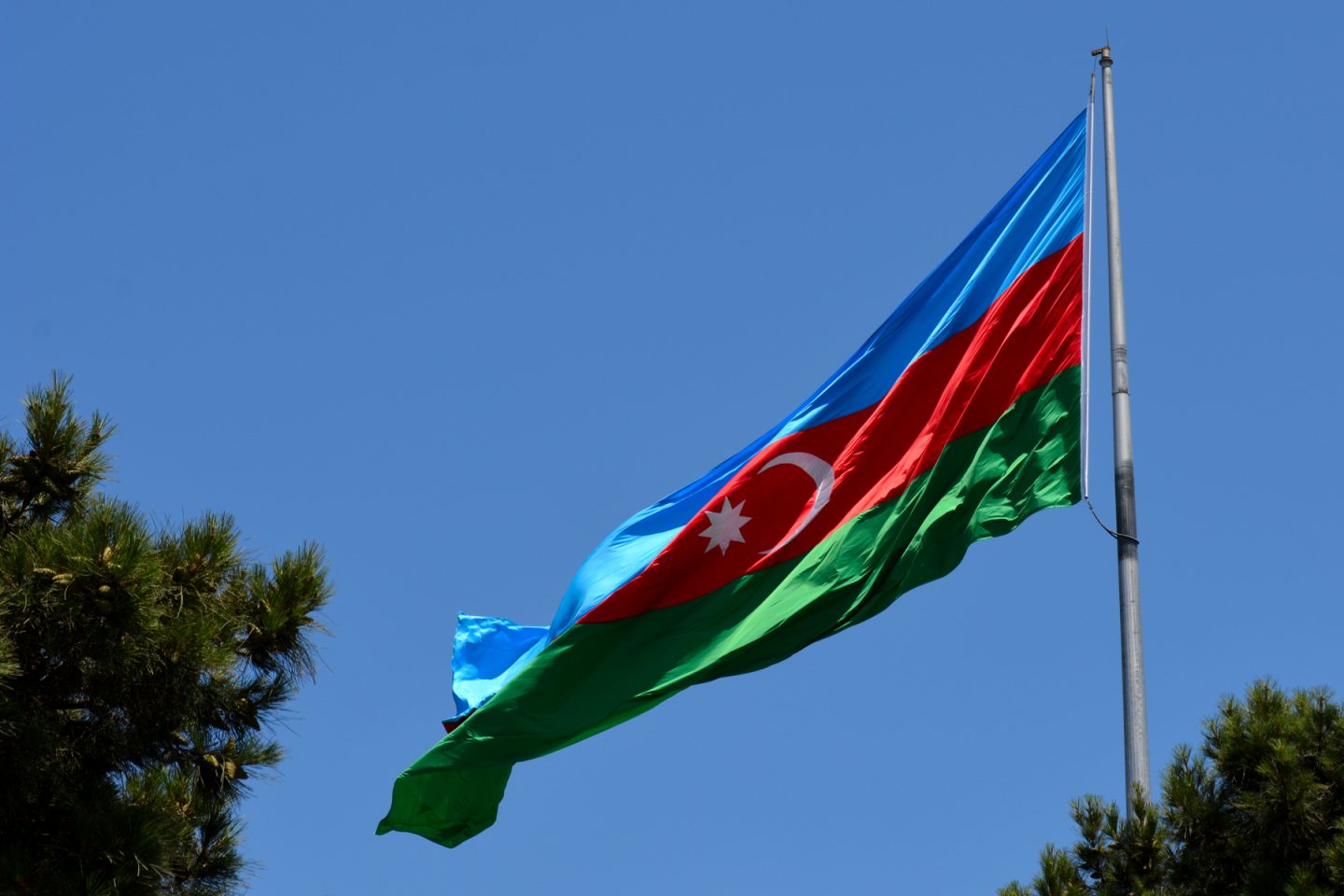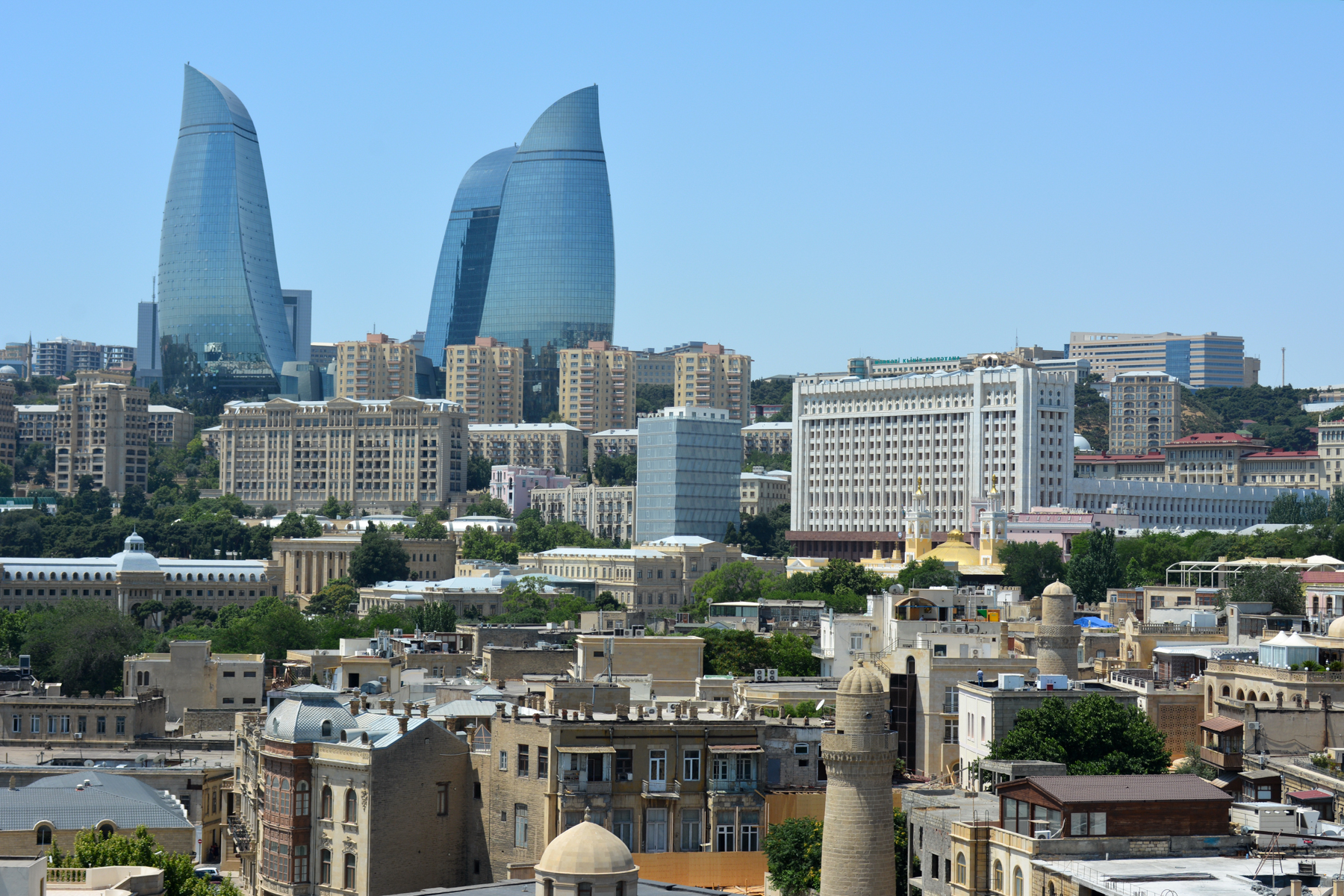The iconic Flame Towers in Baku. Azerbaijan’s capital sits on the coast of the Caspian Sea. Photo by Randy Cronk.
ARTICLE BY BILL DIEM
A byproduct of Russia’s invasion of Ukraine and media focus on the war’s developments is that growing tensions between other former Soviet republics wanting their place in the world are largely obscured. The rumblings that have serious local effects aren’t reaching the world’s eyes and ears while the louder conflict drowns out these smaller ones.
Thirty-one years after claiming its independence, Azerbaijan is trying to move through a slippery world of history and judgments and war with its neighbor Armenia to become recognized as a neutral, non-aligned country, a friend of both NATO and Russia.
The nation’s geography is strategic. At the base of the Caucasus Mountains, it sits in the crossroad between Europe and Asia, said the country’s ambassador to France, Leyla Abdullayeva, at a recent meeting with journalists of the Anglo-American Press Association.
Azerbaijan is on the historic Silk Road between China and Europe, and it has its own resources to export, beginning with oil, and now natural gas, including a recent agreement to double sales to energy-poor Europe. Next, said Abdullayeva, it wants to develop and export clean electricity from hydro, wind, and solar panels.

Map provided by Wiki Commons.
“From the very beginning, we have been an island of stability.”
But wars with neighboring Armenia chill the cool position Azerbaijan desires. Armenia lays claim to a region called Nagorno-Karabakh, also referred to as Haut-Karabakh or Artsakh, that is inhabited by 120,000 ethnic Armenians and located inside the internationally recognized borders of Azerbaijan.
The borders of the Caucasus region’s Georgia, Armenia, and Azerbaijan were chosen when Josef Stalin ruled the Soviet Union. The countries were grouped together in the Transcaucasian Socialist Federative Soviet Republic, a part of the USSR from about 1920 until the USSR disappeared in 1991. As the Soviet Union was unraveling, Nagorno-Karabakh claimed its independence as the Republic of Artsakh, but it was not recognized by any member of the United Nations.
Photo provided by Wiki Commons.
Several subsequent years of war between Armenia and Azerbaijan killed thousands, but Armenia came out ahead when Russia organized a 1994 ceasefire that left Armenia in control of Nagorno-Karabakh and neighboring areas where about 1 million Azerbaijanis lived. In 2020, Azerbaijan, backed by Turkey, won a 44-day war. Russia, France, and the United States then brokered a ceasefire that returned much territory to Azerbaijan, and Russians agreed to patrol a mountainous road, the Lachin Corridor, linking Armenia to mineral-rich Nagorno-Karabakh.
While both countries are constitutionally laïc, or nonreligious, in practice Azerbaijan is Muslim and Armenia is Christian. Armenia suffered genocide during World War I, when Turks killed 1.5 million Armenians. While the current wars are clearly territorial, religion plays into how they are covered by media. Armenia’s Christianity appears to be appreciated in Western countries dominated by Christians and often chosen by Armenian emigrants seeking new homes. France, for example, has more than 700,000 Armenians, according to Jacques Raffy Papazian, the secretary general of Le Mouvement Armenian in France.
“Throughout the centuries Jews have been living in this country.”
Ambassador Abdullayeva says proudly that “tolerance and multiculturalism is a way of living in Azerbaijan.” The country is mostly Shia Muslim, the branch that controls Iran, but there is a large minority of Sunni Muslims, the branch of Saudi Arabia. “They pray Fridays in the same mosques,” she said.
She also said seven synagogues serve the Jewish community that has been there for centuries. This history has helped her country with its relations with Israel, where Azerbaijan will open an embassy in Tel Aviv for the first time. And, she says, her country welcomes political refugees from Russia.
“It was not so easy for Azerbaijan.”
You don’t have to like Azerbaijan to believe Abdullayeva when she said it was a delicate moment for their country of 10 million people when Russia invaded Ukraine on Feb. 24, 2022.
“Azerbaijan has good strategic relations with both of the countries,” she said, but when the invasion happened, Azerbaijan called for an end of hostilities and defended the integrity of Ukraine’s borders. She said a cargo of humanitarian aid stored in the Netherlands in anticipation of trouble was shipped to Ukraine two days later.
Azerbaijan’s belief in territorial integrity is self-serving, because its conflicts with Armenia are based on territory. There is a part of Azerbaijan on the other side of Armenia, and there’s Nagorno-Karabakh, an island of Armenians, in Azerbaijan. Meanwhile, 1,960 Russian soldiers are supposed to patrol the Lachin Corridor, the only road linking Armenia to Nagorno-Karabakh. However, Azerbaijan believes Russia is letting weapons and land mines reach Armenian radicals inside Nagorno-Karabakh, while Armenians believe Azerbaijan has organized a blockade of the road to starve the 120,000 people who live there.
The Armenian Ambassador to France, Hasmik Tolmajian, retweeted a tweet by New Jersey Congressman Frank Pallone “opposing Azerbaijan’s illegal and inhumane blockade.”
“There is no blockade,” said the Azerbaijan ambassador, who claims that online videos show cars coming and going.
Abdullayeva is a charming woman on her first posting as an ambassador. She met French President Emmanuel Macron for several minutes when she presented herself as the new ambassador in October, and she said Macron told her, “La France c’est un pays ami,” or “France is a friend.”
But diplomacy is not so simple. According to the ambassador, Macron also said last fall, “We stand by Armenia.” Thus, when the presidents of Armenia and Azerbaijan were scheduled to meet in Brussels last fall, Azerbaijan responded to Armenia’s request for Macron to attend by saying his presence would not be fair. So the negotiations never happened. Azerbaijanis blame Armenians, but it’s easy to see it the other way. In the end, one could blame Macron for not being more wishy-washy when talking about the countries to which he is supposed to be neutral.
Armed hostilities between Azerbaijan and Armenia resurfaced briefly last September. A couple hundred soldiers were killed, with Armenia suffering the heaviest losses. Papazian, who met via Zoom with the Anglo-American Press Association, says that Russia controls the Armenian military and prevented Armenia from using defensive weapons. His France-based organization, Le Mouvement Armenien, is pushing Armenia to replace its Russian alliance with Western, democratic partners.

Leyla Abdullayeva, ambassador of Azerbaijan to France.
U.S. Secretary of State Antony Blinken met with ambassadors from both countries in New York after the battle. Before the November election, then-speaker of the House, California Democrat Nancy Pelosi, blamed Azerbaijan for the trouble and visited Armenia with two Armenian-American congresswomen from California.
The region between the Black Sea and the Caspian Sea has a long, yet recent, history of turmoil. Various conquerors controlled the area that is now Georgia, Armenia, and Azerbaijan for the past 2,000 years. The Turkish Ottoman Empire and the Persian Empire ran the Caucasus region until the Russian Empire took over part of it in the 19th century. In 1918 when WWI ended the Ottoman Empire, Azerbaijan, Georgia, and Armenia all declared independence—Azerbaijan even gave women the vote in 1918, a year before the United States—but independence lasted only two years. Russian Communists annexed all three countries into the USSR and formed the Transcaucasian Socialist Federative Soviet Republic.
In recent times, Russia backs Armenia and Turkey backs Azerbaijan. Papazian says Russian propaganda reminds Armenians that the West did nothing when Turkey was killing Armenians during WWI. One might think that Iran, being the principal Shia Muslim country and home of many Azerbaijanis (they make up Iran’s largest minority ethnic group), would be close to Azerbaijan, but Abdullayeva said that Iran is pushing anti-Azerbaijan propaganda. On Jan. 27 an armed Iranian killed a security guard at the Azerbaijan embassy in Tehran, and the embassy was closed temporarily.
“We have seen a big campaign in media against Azerbaijan in Iran.”
Russia supplies arms to both countries. Abdullayeva said Azerbaijan pays for its weapons, while Armenia does not. Azerbaijan also buys arms from Israel, which agitates Iran.
However, Russia is changing, says François Alfonsi, a French member of the European Parliament who plans to join a European delegation to Armenia in February. “Russia, since the start of the war in Ukraine, is in the process of changing its strategic alliances and is getting closer to Azerbaijan and Turkey,” wrote the politician in the independent Agence Bretagne Presse.
While there is little sign that continuing peace talks over the conflict with Armenia are advancing, Abdullayeva says her country is pushing for a peace treaty. “We’ve had enough wars in our region,” she said.
I asked if Azerbaijan’s sense of unity, stability, and tolerance might be the effect of some artist or writer, and Abdullayeva immediately said, “Nizami Ganjavi, a 12th century poet.”
Nizami was born in Azerbaijan’s Ganja, a town that in Nizami’s lifetime was part of Persia. Iran is Persia’s descendant. Nizami’s narrative poetry, writes Kamran Talattof at the University of Arizona, “includes the romantic dimensions of human relations as well the heroic, and plumbs the human psyche with an unprecedented depth and understanding.”
Nizami is known for his “Five Treasures,” five long narrative poems, one of which is “Leyla and Majnun,” about two Arab lovers. The name Leyla continues to be used in areas that were once Persia, as it is for the Azerbaijan ambassador to France, Leyla Abdullayeva.

The flag of Azerbaijan. Photo by Randy Cronk.
Bill Diem, a graduate of Ohio Wesleyan University and Antioch College, contributes a weekly column to the Newberry News in Michigan, and he is learning to be a video journalist. For three decades, he was a print journalist best known for his coverage of technology and industrial strategy in the global automobile industry.









